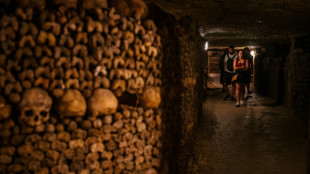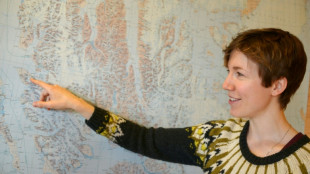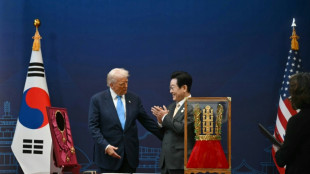
Australia's Aboriginals win bid for UNESCO listing of ancient site

A delegation of Australia's Aboriginal people that travelled to Paris to campaign for UN backing to protect a heritage site they say is threatened by harmful mining were "overjoyed" Friday as the ancient site was recognised on the coveted list.
The World Heritage Committee at UNESCO, the United Nations' cultural organisation, had been deliberating since the start of the week on what sites to include in the latest edition of the body's world heritage list.
Among the dozens of sites under consideration was Murujuga, a remote area in the state of Western Australia that according to estimates houses around one million petroglyphs -- carvings that could date back 50,000 years.
"It's possibly the most important rock art site in the world," said Benjamin Smith, a rock art specialist at the University of Western Australia.
"We should be looking after it."
The site is located on the Burrup peninsula, home to the Mardudunera people, and under threat from nearby mining developments.
"This is a momentous day for our old people and our future generations, to have Murujuga's outstanding universal heritage values recognised by the world," delegation leader Raelene Cooper said in a statement following the announcement, adding the group was "overjoyed".
Making the UNESCO's heritage list often sparks a lucrative tourism drive, and can unlock funding for the preservation of sites.
It does not in itself trigger protection for a site, but can help pressure national governments into taking action.
"It's absolutely crucial that the Australian government takes it more seriously and regulates industrial pollution in that area more carefully," Smith said.
Giant mining corporations have been active in the resource-rich Pilbara region for decades.
- 'Keep our culture thriving' -
Australian company Woodside Energy operates the North West Shelf, an industrial complex that includes offshore platforms, undersea pipelines, and hydrocarbon processing facilities.
The project consistently ranks among Australia's five largest emitters of greenhouse gas, according to figures from the country's Clean Energy Regulator.
"These carvings are what our ancestors left here for us to learn and keep their knowledge and keep our culture thriving through these sacred sites," said Mark Clifton, a member of the three-person delegation meeting with UNESCO representatives.
Environmental and indigenous organisations argue the presence of mining groups has already caused damage with industrial emissions.
They are "creating hundreds of holes in the surface. And that is causing the surfaces with the rock art to break down," Smith said.
In an emailed statement to AFP, Woodside Energy said it recognises Murujuga as "one of Australia's most culturally significant landscapes".
It added that, according to independent peer-reviewed studies, "responsible operations" could help protect the heritage.
Woodside had taken "proactive steps", it said, "to ensure we manage our impacts responsibly".
In May, the Australian government extended the operating licence for the liquefied gas plant by 40 years, with conditions.
Australia insists that extending the plant -- which each year emits millions of tonnes of greenhouse gas -- does not tarnish a pledge to reach net zero by 2050.
- 'Measures of protection' -
Activists, saying the government is not taking their concerns seriously enough, demanded that UNESCO make any decision to put the site on the world heritage list contingent on the government offering adequate protection.
The World Heritage Committee's decision Friday sends "a clear signal to the Australian Government and Woodside that things need to change," Cooper said.
"Global scrutiny will now be applied to what is happening at Murujuga," she said, adding that the community would continue fighting for the site's protection.
The Australian government has sent a separate delegation to Paris, also comprising members of the region's Aboriginal population, to push for the site's recognition.
Australia's strong presence at the heritage committee meeting "is a meaningful opportunity to support the protection and conservation of some of the world's most important cultural and natural sites," Environment Minister Murray Watt said.
Icomos, a non-governmental organisation partnering with UNESCO, said it was urgent for the Australian government to oversee "the complete elimination of harmful acidic emissions that currently affect the petroglyphs".
Y.Borowski--GL

 London
London

 Manchester
Manchester
 Glasgow
Glasgow
 Dublin
Dublin
 Belfast
Belfast
 Washington
Washington
 Denver
Denver
 Atlanta
Atlanta
 Dallas
Dallas
 Houston Texas
Houston Texas
 New Orleans
New Orleans
 El Paso
El Paso
 Phoenix
Phoenix
 Los Angeles
Los Angeles



